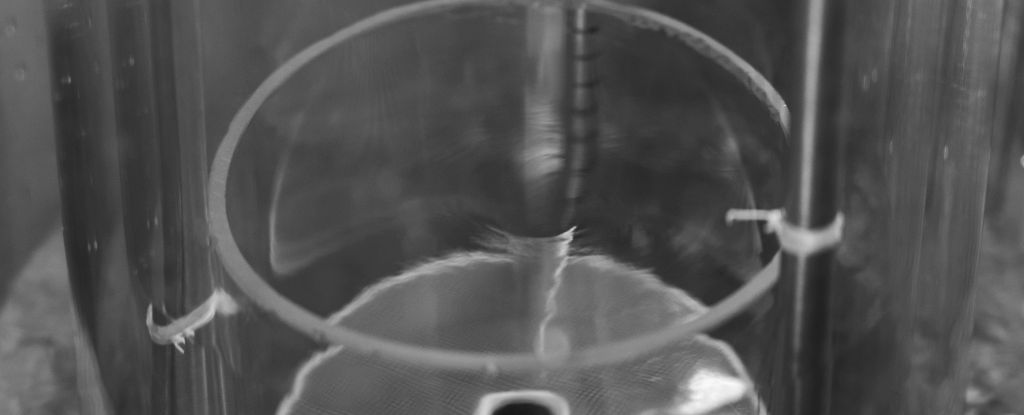A superfluid vortex controlled in a lab is helping physicists learn more about the behavior of black holes.
A whirlpool generated in helium cooled to just a fraction above absolute zero mimics the gravitational environment of these objects to such high precision that it’s giving unprecedented insight into how they drag and warp the space-time around them.
“Using superfluid helium has allowed us to study tiny surface waves in greater detail and accuracy than with our previous experiments in water,” explains physicist Patrik Švančara of the University of Nottingham in the UK, who led the research.
“As the viscosity of superfluid helium is extremely small, we were able to meticulously investigate their interaction with the superfluid tornado and compare the findings with our own theoretical projections.”
Black holes are quite probably the weirdest, most extreme objects in a whole Universe of very weird things. They’re also notoriously difficult to study. They don’t emit any radiation we can detect; we can only see light from the space immediately around them. But we have some very good theoretical studies that can describe their observed behavior quite accurately.
One way we can learn more about them is by creating black hole analogs. These are experiments that can recreate the theory of black holes to elucidate other aspects of their behavior. One type of black hole analog is a vortex or whirlpool.
Any material that comes close enough to a black hole starts to swirl around it, and then fall onto it, like water circling and gurgling down a drain.
So apt is this comparison that scientists have even built water vortices to study black hole behavior. Švančara and his colleagues, however, wanted to take this a step further – with superfluid helium.
This is an isotope of helium – helium-4 – that has been cooled to -271 degrees Celsius (-456 Fahrenheit), just slightly above absolute zero. At this extremely cold temperature, the bosons in helium-4 slow down enough to overlap and behave as one super-atom – a fluid with zero viscosity, or superfluid.
The team harnessed the unusual quantum properties of superfluid helium-4 to generate a sort of ‘quantum tornado’.
“Superfluid helium contains tiny objects called quantum vortices, which tend to spread apart from each other,” Švančara says. “In our set-up, we’ve managed to confine tens of thousands of these quanta in a compact object resembling a small tornado, achieving a vortex flow with record-breaking strength in the realm of quantum fluids.”
By studying this tornado, the researchers were able to identify similarities between the vortex flow and the influence of a spinning black hole on the curved space-time around it. In particular, the researchers observed standing waves analogous to black hole bound states, and excitations analogous to the ringdown of a newly formed black hole.
And this is just the start. Now that the researchers have demonstrated that their experiment works the way they intended, the vortex is poised to unlock a new area of black hole science.
“When we first observed clear signatures of black hole physics in our initial analog experiment back in 2017, it was a breakthrough moment for understanding some of the bizarre phenomena that are often challenging, if not impossible, to study otherwise,” says physicist Silke Weinfurtner of the University of Nottingham.
“Now, with our more sophisticated experiment, we have taken this research to the next level, which could eventually lead us to predict how quantum fields behave in curved spacetimes around astrophysical black holes.”
The research has been published in Nature.





